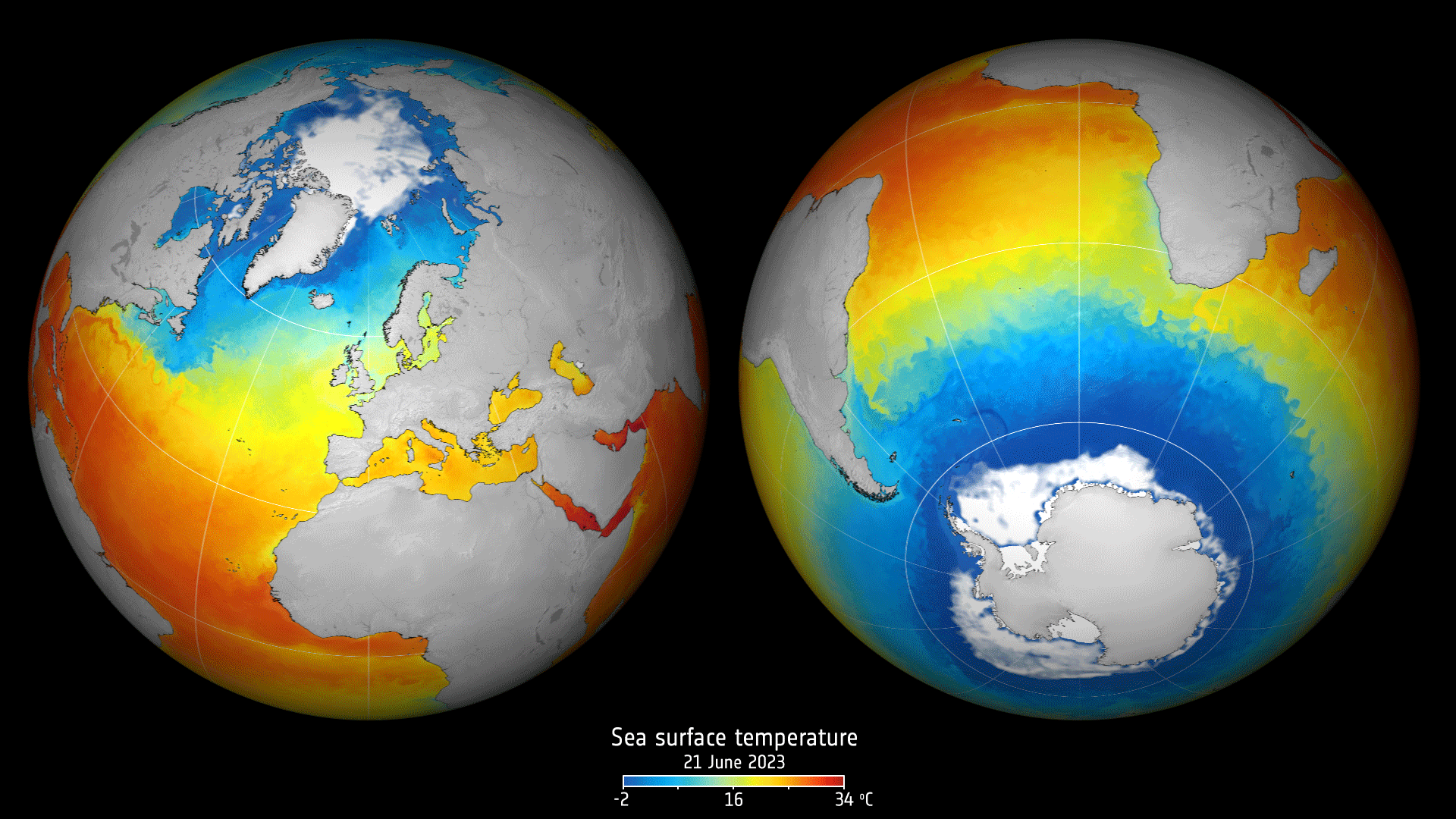
Copernical Team
It's time to build a space telescope interferometer—this could be the first step
This request seems a bit unusual, so we need to confirm that you're human. Please press and hold the button until it turns completely green. Thank you for your cooperation!
Press and hold the button
If you believe this is an error, please contact our support team.
185.132.36.159 : e8c297bb-f638-4489-b701-6f174a6d
Sea surface warming faster than expected

Satellite observations show that sea-surface temperatures over the past four decades have been getting warmer at an accelerated pace.
Missing nitrogen traced to deep Earth core in planetary formation simulations
 A longstanding mystery in Earth science may finally have an answer: why Earth's rocky mantle contains so little nitrogen compared to other volatile elements. According to a new study from Ehime University, most of Earth's nitrogen may have sunk into the core during its formation, effectively hiding it from view for billions of years.
During Earth's infancy, the planet was covered by a deep
A longstanding mystery in Earth science may finally have an answer: why Earth's rocky mantle contains so little nitrogen compared to other volatile elements. According to a new study from Ehime University, most of Earth's nitrogen may have sunk into the core during its formation, effectively hiding it from view for billions of years.
During Earth's infancy, the planet was covered by a deep A 'fireball' lights up Mexico City skies, sparking awe and plenty of memes
This request seems a bit unusual, so we need to confirm that you're human. Please press and hold the button until it turns completely green. Thank you for your cooperation!
Press and hold the button
If you believe this is an error, please contact our support team.
185.132.36.159 : 786316bc-e50a-4d24-9fb1-6d7363f6
Webb spots clues of black hole at heart of nearby galaxy M83

Astronomers using the NASA/ESA/CSA James Webb Space Telescope have discovered evidence that suggests the presence of a long-sought supermassive black hole at the heart of the nearby spiral galaxy Messier 83 (M83). This surprising finding, made possible by Webb’s Mid-Infrared Instrument (MIRI), reveals highly ionised neon gas that could be a telltale signature of an active galactic nucleus (AGN), a growing black hole at the center of a galaxy.
Tree planting for Ignis
 Image:
Tree planting for Ignis
Image:
Tree planting for Ignis Putin praises Musk, compares him to Soviet space hero
 Russian President Vladimir Putin praised Elon Musk on Wednesday, telling university students he was a pioneer comparable to legendary Soviet rocket engineer Sergei Korolev.
The comments came as Russia and the United States forged closer ties under President Donald Trump's administration, of which billionaire SpaceX founder Musk is a key figure.
"You know, there's a man - he lives in the
Russian President Vladimir Putin praised Elon Musk on Wednesday, telling university students he was a pioneer comparable to legendary Soviet rocket engineer Sergei Korolev.
The comments came as Russia and the United States forged closer ties under President Donald Trump's administration, of which billionaire SpaceX founder Musk is a key figure.
"You know, there's a man - he lives in the Strongest 'hints' yet of life detected on distant planet
 Astronomers announced Thursday that they had detected the most promising "hints" of potential life on a planet beyond our solar system, though other scientists expressed scepticism.
There has been vigorous debate in scientific circles about whether the planet K2-18b, which is 124 light years away in the Leo constellation, could be an ocean world capable of hosting microbial life, at least.
Astronomers announced Thursday that they had detected the most promising "hints" of potential life on a planet beyond our solar system, though other scientists expressed scepticism.
There has been vigorous debate in scientific circles about whether the planet K2-18b, which is 124 light years away in the Leo constellation, could be an ocean world capable of hosting microbial life, at least. Register now for ESA’s Living Planet Symposium in Vienna

Registrations are now open for the European Space Agency’s Living Planet Symposium (LPS) – one of the largest Earth observation conferences in the world. The event will take place on 23–27 June 2025 in Vienna, Austria.
First Spectrum: Strongest biosignature signal yet found on exoplanet
 Astronomers have reported their most compelling evidence to date of potential biological activity on a planet beyond our solar system, though they emphasize further verification is needed. Using the James Webb Space Telescope (JWST), a research team led by the University of Cambridge identified the spectral presence of dimethyl sulfide (DMS) and/or dimethyl disulfide (DMDS) in the atmosphere of exoplanet K2-18b.
Astronomers have reported their most compelling evidence to date of potential biological activity on a planet beyond our solar system, though they emphasize further verification is needed. Using the James Webb Space Telescope (JWST), a research team led by the University of Cambridge identified the spectral presence of dimethyl sulfide (DMS) and/or dimethyl disulfide (DMDS) in the atmosphere of exoplanet K2-18b. 
